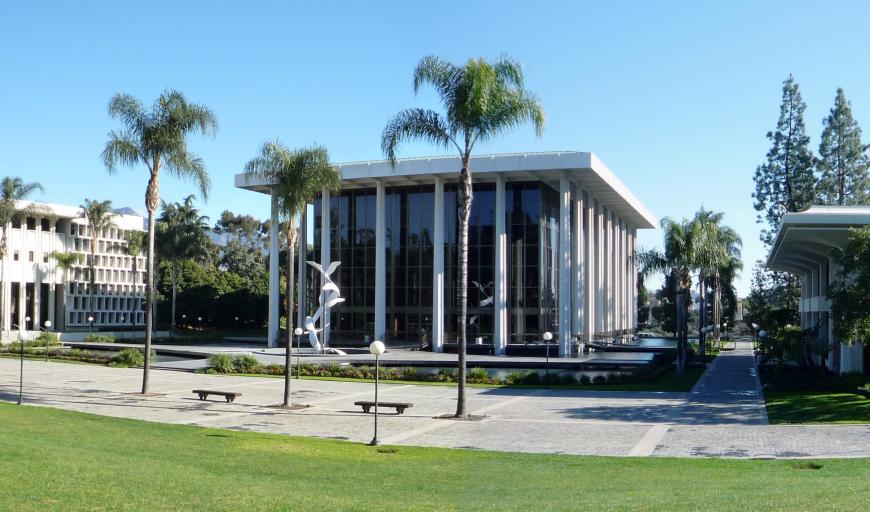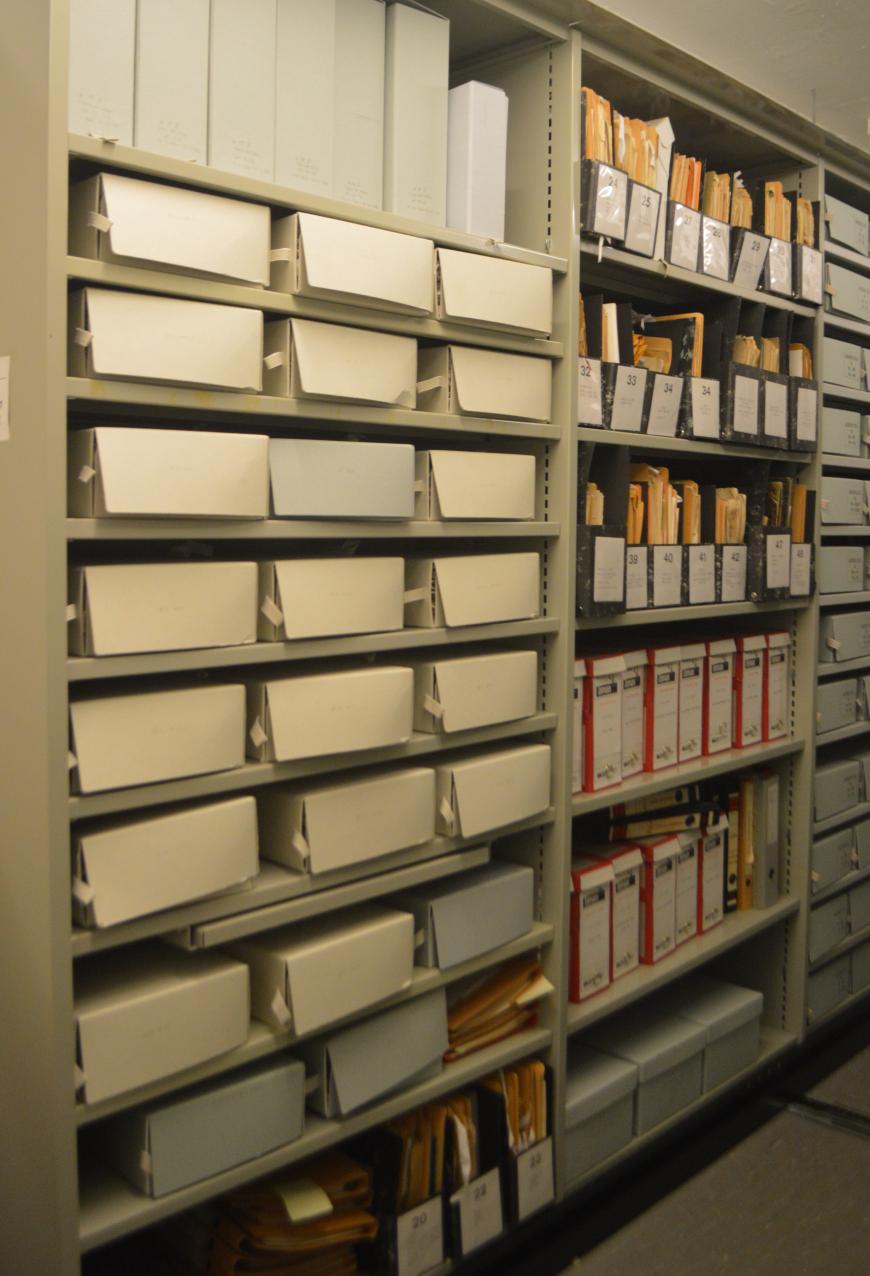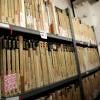
Its location may not have been as protected as the treasure in Raiders of the Lost Ark, but the archive amassed by the administrators of Pasadena’s Ambassador Auditorium — one of the greatest collections of live (one-of-a-kind) classical music, opera, pop, and jazz recordings in the world — has managed to stay under the radar. Even now, it’s not widely known that the entire Ambassador archive (all 636 boxes) is stored on the campus of Stanford University in Palo Alto, where it’s being painstakingly preserved by the Archive of Recorded Sound.
In the Beginning
On April 7, 1974, the cultural landscape of Los Angeles underwent a tectonic shift with the opening of Ambassador Auditorium. The venue was constructed in Pasadena as part of the campus of the Worldwide Church of God, then under the leadership of its founder, a former newspaper advertising designer turned radio evangelist named Herbert W. Armstrong.
Possessed of a fortune, Armstrong had a mandate for the Ambassador that was simple — present the world’s best performing artists in classical music, opera, dance, popular music, and jazz. The opening-night gala featured the Vienna Symphony Orchestra conducted by Carlo Maria Giulini.
Between then and 1995, the year the campus shut down, an estimated 2.5 million people attended concerts at the palatial auditorium with it plush papal-purple lobby carpets from India, Swarovski-trimmed crystal chandeliers, Baccarat crystal candelabras, American cherrywood veneers, and Spanish marble and Azerbaijani onyx staircases. The theater held 1,262 russet-yellow seats facing a swooping gold-leafed proscenium and could claim pin-drop acoustics — the best to be heard in L.A. until the opening of Walt Disney Concert Hall.
Ambassador Auditorium’s lineup of guest artists and ensembles was stellar. It included recitals by singers Luciano Pavarotti, Plácido Domingo, Leontyne Price, Jessye Norman, and Mirella Freni; pianists Arthur Rubinstein (whose performance was one of the few recorded at the venue to be commercially released), Rudolf Firkušný, Maurizio Pollini, Vladimir Ashkenazy, Vladimir Horowitz, Horacio Gutiérrez, Claudio Arrau, and Alicia de Larrocha; guitarists Julian Bream and Andrés Segovia; cellists Mstislav Rostropovich and Yo-Yo Ma; and the Juilliard String Quartet and flutist Jean-Pierre Rampal. Orchestras like the Vienna Philharmonic and the Royal Concertgebouw Orchestra with Bernard Haitink played the auditorium, and in jazz, the Count Basie Orchestra, Benny Goodman, the Modern Jazz Quartet, Oscar Peterson, Ravi Shankar, Bing Crosby, Sammy Davis Jr., and Frank Sinatra all graced the stage.
A story goes that, in 1982, when the Ambassador had, on the spur of the moment, an opportunity to present the Berlin Philharmonic as part of the orchestra’s final world tour under the baton of Herbert von Karajan, Armstrong simply asked, “Are they the best? Then get them.”
The Lost Ambassador Recordings

In the years that followed the church’s dissension-filled closing and break with Armstrong, a rumor began to circulate that every performance that had ever taken place in Ambassador Auditorium had been recorded. But if that was true, where were the recordings? Years passed, and the location of the mysterious archive remained a carefully guarded secret. In fact, when I began my own search and contacted the current administrators at the Worldwide Church of God, now named Grace Communion International and based in Charlotte, North Carolina, they had no idea what I was talking about. So I resorted to Google.
Not only was the rumor true, the entire archive (hundreds of boxes of recordings, videotapes, posters, programs, and administrative documentation) had been donated to the Stanford Archive of Recorded Sound, where it’s currently watched over by Sound Archives Librarian Nathan Coy.
When asked about the public’s access to the archive, Coy was forthright about keeping knowledge of it under wraps.
“We don’t actively advertise or promote that we have it,” he said. “But we’re not hiding it either. We make it available on our website for research purposes and highlight it as a collection of interest. A Google search will lead you to us. But it’s true, we’re not actively seeking users.”
That being said, once you find your way, you can explore what’s in the collection via the Online Archive of California and can reach out via email to Archive of Recorded Sound to request streaming access to Ambassador Auditorium recordings.
Title: Ambassador Auditorium Collection
Identifier/Call Number: ARS.0043
Repository: Archive of Recorded Sound, Stanford University Libraries / Stanford, California 94305-3076
Physical Description: 636 containers of various sizes with multiple types of print materials, photographic materials, audio and video materials, realia, posters, and original artwork (682.05 linear feet)
Date (inclusive): 1974–1995
There’s a lot of material in the archive, even though, as a detailed description clarifies, some documentation is duplicated. A “condition governing use” note, however, warns that “publication and reproduction rights reside with the creators and their heirs.”
The primary issue, Coy points out, is that, with very few exceptions, the recordings were made for purposes of documentation, not reproduction and distribution. “Concerns over copyright violations and the protection of artists’ property is essential.”
As with every archive of recorded material, the preservation and transfer of materials to modern digitized formats is the prime directive. It’s an exceedingly time-consuming process. “The collection was donated to Stanford in 2001,” Coy said. “Prior to that, it had been stored and somewhat forgotten.”
The archivists at Stanford discovered, to their delight, that “the Ambassador audio recordings were close to master-tape quality” Coy said. “And there were color videotape recordings of several key performances. The audio recordings were produced on 4-track half-inch tape with stage and audience microphone placement. The videos were done on 2-inch quad videotape.
“The challenge has been to transfer it all. I’d say we’ve preserved at least 100 performances. And we’re certainly not done. We are well aware that it is a remarkable collection and a historic documentation of that period. That’s why it’s one of our high priorities.”
For those doing research or with a serious reason for exploring the Ambassador material, the collection is accessible, Coy emphasizes.
“But,” he repeated, “because of the intellectual property issues surrounding artists of this caliber, we have to be very careful. We want to provide access, but in a way that’s respectful of the artists’ rights.”
Corrections: This article has been updated to include Nathan Coy’s correct title, and a broken link to the Online Archive of California has been corrected.


